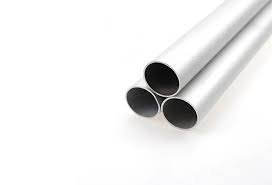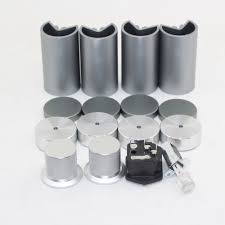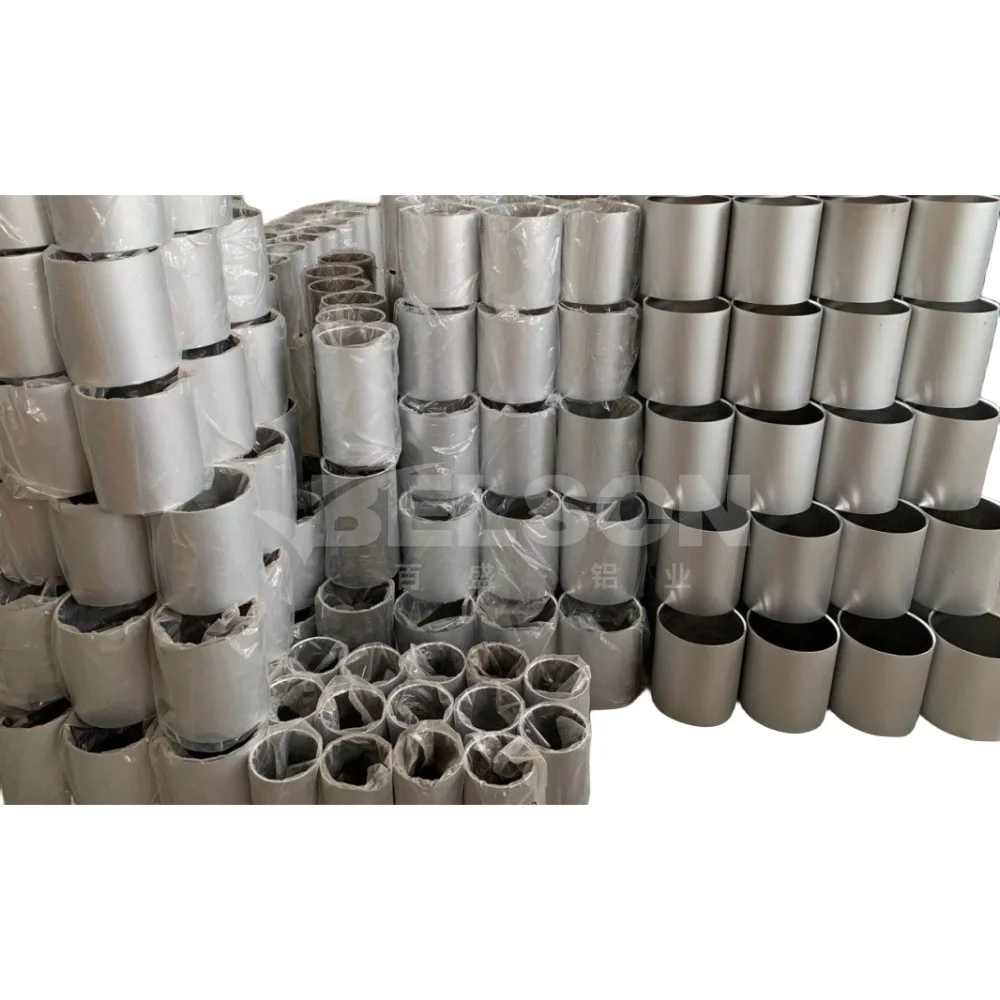- This topic is empty.
-
AuthorPosts
-
23/02/2024 at 18:06 #3144
Aluminum alloys are widely used in various industries due to their lightweight, strength, and corrosion resistance. However, to enhance their appearance and improve their durability, additional treatments are often required. Two commonly used processes for aluminum alloy surface treatment are sandblasting and anodizing. In this blog post, we will explore the difference between sandblasting and anodizing of aluminum alloy, with a focus on the expertise of Belson, a leading company in this field.
1.Introduction to Sandblasting and Anodizing
Sandblasting and anodizing are surface treatment processes used to enhance the properties of aluminum alloys. While both methods aim to improve the appearance and durability of the material, they differ in terms of the techniques and results they offer.

2.Sandblasting: Surface Preparation
Sandblasting is a process that involves propelling fine particles at high speeds onto the surface of the aluminum alloy. These particles, typically abrasive materials such as sand, glass beads, or aluminum oxide, remove impurities, oxides, and imperfections from the surface, creating a clean and textured finish.
The primary purpose of sandblasting is to prepare the surface for subsequent treatments, such as painting, powder coating, or anodizing. By removing contaminants and creating a roughened texture, sandblasting improves the adhesion and durability of the coating, resulting in a more aesthetically pleasing and long-lasting finish.
Belson specializes in providing high-quality sandblasting services for aluminum alloys. Our expertise lies in using the right abrasive materials, controlling the pressure and speed of the particles, and ensuring precise and consistent surface preparation.
3.Anodizing: Surface Protection and Enhancement
Anodizing is a process that forms a protective oxide layer on the surface of aluminum alloys. This electrochemical process involves immersing the aluminum alloy in an electrolytic solution and passing an electric current through it. The result is the controlled oxidation of the aluminum surface, creating a durable, corrosion-resistant, and aesthetically appealing layer of aluminum oxide.
The anodizing process enhances the natural properties of aluminum alloys, providing increased resistance to wear, corrosion, and fading. It also allows for the incorporation of various colors and finishes, expanding the design possibilities for aluminum alloy products.
4.Types of Anodizing
There are different types of anodizing processes, each with its own characteristics and applications. The most common types of anodizing include:
4.1. Type I: Chromic Acid Anodizing
Chromic acid anodizing is a relatively thin and non-decorative anodizing process. It provides excellent corrosion resistance but does not offer significant improvement in terms of wear resistance or color options.4.2. Type II: Sulfuric Acid Anodizing
Sulfuric acid anodizing is the most commonly used type of anodizing. It produces a thicker and more durable oxide layer compared to chromic acid anodizing. This process allows for a wide range of color options and provides improved corrosion and wear resistance.4.3. Type III: Hardcoat Anodizing
Hardcoat anodizing, also known as Type III anodizing or hard anodizing, results in an even thicker and denser oxide layer. This type of anodizing offers exceptional wear resistance, making it suitable for applications where durability is critical, such as aerospace components or industrial equipment.Belson specializes in providing high-quality anodizing services, including sulfuric acid anodizing and hardcoat anodizing. Their expertise lies in achieving precise and consistent oxide layer thickness, ensuring the desired level of durability, corrosion resistance, and aesthetics.

5.Comparison: Sandblasting vs. Anodizing
While both sandblasting and anodizing contribute to improving the appearance and durability of aluminum alloy surfaces, they differ in terms of their purpose, process, and results:
5.1. Purpose:
Sandblasting: Surface preparation for subsequent treatments, such as painting, powder coating, or anodizing.
Anodizing: Surface protection, corrosion resistance, and enhancement of the natural properties of aluminum alloys.
5.2. Process:
Sandblasting: Propelling abrasive particles at high speeds onto the surface to remove impurities and create a textured finish.
Anodizing: Electrochemical process that forms a controlled oxide layer on the surface of aluminum alloys.
5.3. Results:
Sandblasting: Clean and textured surface, improved adhesion of subsequent coatings.
Anodizing: Durable, corrosion-resistant, and aesthetically appealing oxide layer, with a wide range of color options.
Belson: Expertise in Surface Treatment of Aluminum Alloys
Belson is a leading company specializing in the surface treatment of aluminum alloys. With years of experience and a commitment to excellence, Belson offers high-quality sandblasting and anodizing services, tailored to the specific needs of their customers.
Our expertise lies in providingprecise and consistent surface preparation through sandblasting, ensuring optimal adhesion for subsequent coatings. Additionally, our anodizing processes, including sulfuric acid anodizing and hardcoat anodizing, result in durable and corrosion-resistant surfaces with a wide range of color options.
By partnering with Belson, customers can benefit from our extensive knowledge and advanced technologies, achieving superior surface finishes for our aluminum alloy products. Whether it's preparing surfaces for painting or powder coating, or enhancing the durability and aesthetics through anodizing, Belson delivers exceptional results.

Conclsuion
In conclusion, both sandblasting and anodizing are essential surface treatment processes for aluminum alloys. Sandblasting prepares the surface by removing impurities and creating a textured finish, while anodizing forms a protective and aesthetically pleasing oxide layer. By understanding the difference between these processes and leveraging the expertise of companies like Belson, manufacturers can enhance the appearance, durability, and performance of their aluminum alloy products. Experience the difference in surface treatment with Belson and take your aluminum alloys to new heights of quality and longevity.
Sandblasting Anodized Cylinder Tubes: Your Guide to Durability and Customization
Belson
info@bsaluminum.com -
AuthorPosts
- You must be logged in to reply to this topic.
